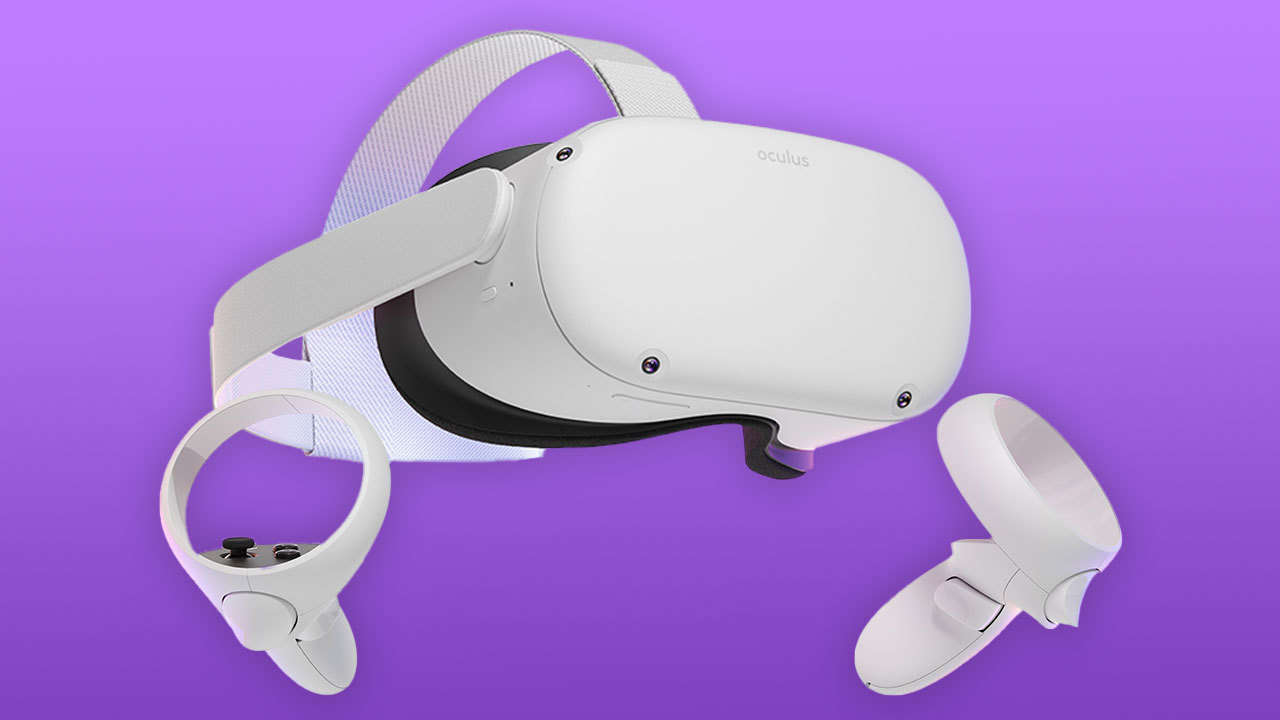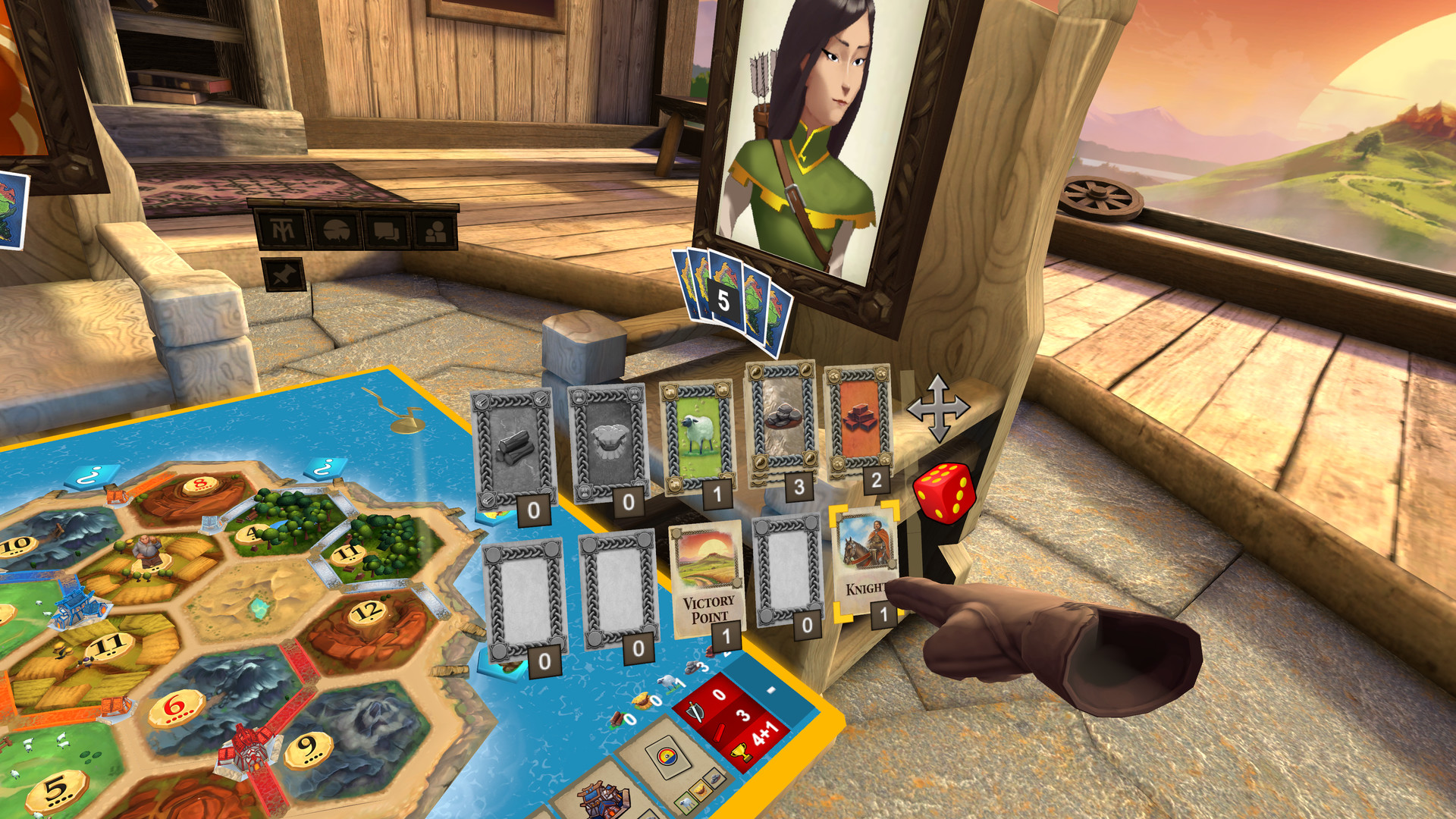If you're a regular reader here at Opium Pulses, you might remember a few series of game reviews we did following the release of the Oculus Quest, we've now reviewed a total of 90 games for the platform and don't intend on stopping!
Now that the Oculus Quest 2 has been out for a few months we figured we'd pick one up ourselves and review games played exclusively on the new headset. Everything we review in this series will be played and tested on our brand new Quest 2, so all pros and cons should be considered.
Click here for part 2: https://www.opiumpulses.com/article/421/10-oculus-quest-2-game-reviews-part-2
Let’s start in alphabetical order, simply ‘cause it's prettier…
B-Team
If you’ve played the GearVR/Go version of B-Team there isn’t a great deal of difference, which is unfortunate. The content is made up of three different game modes, an endless runner, on-rails shooter and challenges mode. The game starts with the runner mode, which is an odd choice considering there aren’t any anti-sickness options and being thrust in to fast forward motion like that might at first put many people off. You’ll unlock each game mode in order, so to play the shooter mode you need to complete a runner level and to play a challenge mode you’ll need to complete a shooter level. There’s no way to skip or pay to pass levels if you get stuck, so if you can’t complete a certain mission, the playable content could come to an abrupt end.
In the runner mode, you’ll have to move left and right, collecting medals and avoiding obstacles, you’ll have on-the-fly choice of four characters, each with their own abilities such as sweeping for mines and jumping long distances, you’ll need to use each of them to get as far as possible – this mode isn’t dissimilar to games like Temple Run or Subway Surfers. The shooter mode has you mostly stood still while you take out incoming enemies and projectiles from corner to corner, each character again uses different weapons that are more effective depending on what you’re shooting – if you’ve played titles like Time Crisis or Virtua Cop then this mode will be familiar to you. Challenge mode will have you solving puzzles and completing mini-challenges, this mode has the most variety of all three.
While B-Team has enough content to keep you occupied it isn’t going to be blowing your mind, at least not at this point in VR’s evolution. It has incredibly simple graphics, no real accessibility options and feels like a minimal effort Oculus Go port where you’ll never be using both controllers at the same time. There’s no way to easily find cosmetics you’ve recently unlocked without checking each one individually. We feel if the game was split into three and allowed you to choose whether to play runner, gunner or challenge missions would give players control of the type of experience they’re in the mood for. Luckily Twisted Pixel put everything they learned and more into their next VR game ‘Path of the Warrior’ which has been one of our favourite games to review. Sadly B-Team gets a B minus rating with…
6/10
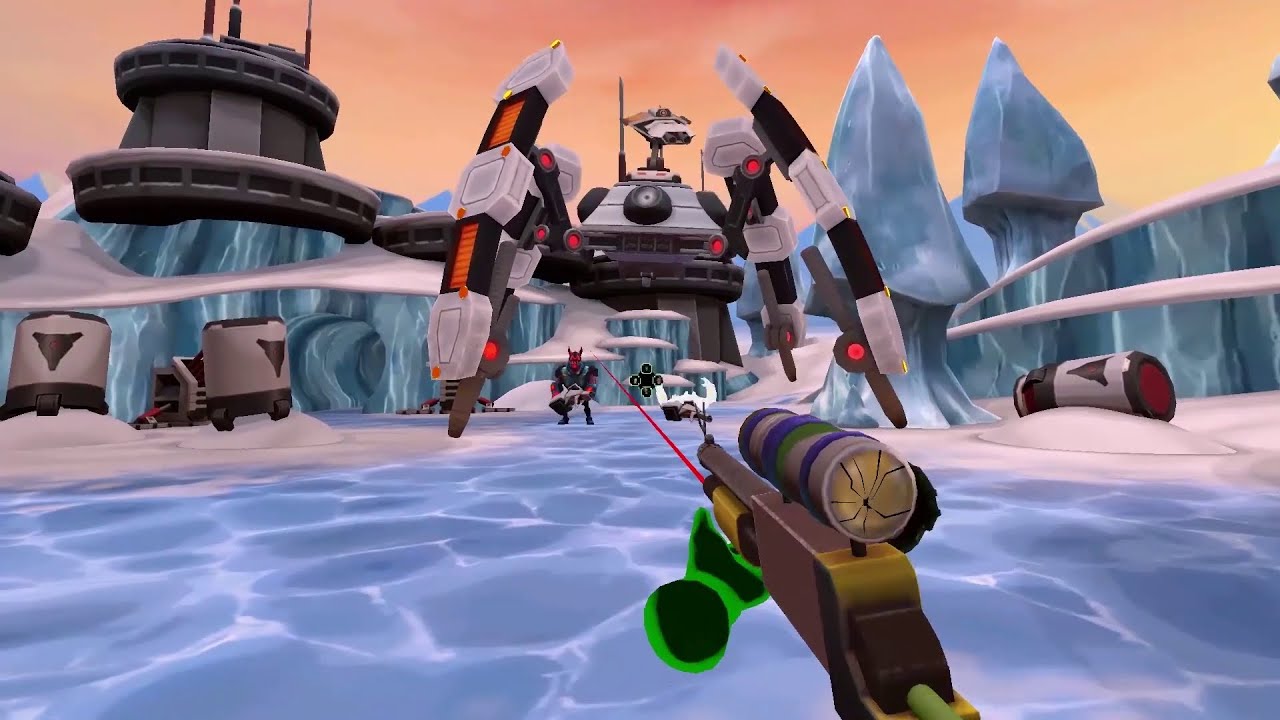
Baba Yaga
This might be as hard to read as it was to write, so maybe cover one eye. Loosely based on Slavic folktale, Baba Yaga tells the story of two young sisters going on a dangerous adventure to a dark forest in search of a special flower that has the healing properties needed to cure their mother of a serious illness. The experience is very story-driven so we won’t spoil much more of the plot than that, although there really isn’t much else to tell even if we wanted to. A complete playthrough, unlocking all achievements and reaching all three endings took no more than a single hour. If you spend time in VR less for interaction and more for experiences then that is the itch Baba Yaga hopes to scratch for you.
Let’s talk about some of the things Baba Yaga gets right. Some of the vocal talent they have recruited to voice the handful of characters in the games is impressive (Kate Winslet, Daisy Ridley, Jennifer Hudson, Glenn Close), this isn’t common for small VR titles to pull in such big names. The only gripe we have with the choices (and it’s a big one) is picking Daisy Ridley to voice 10-year-old Magda, she easily sounds 30-40 and doesn’t even attempt to sound young or innocent, totally breaks the immersion of Magna being a scared and vulnerable child. Another positive would be the inclusion of hand-tracking support, while not perfect, it does mean you can enjoy the experience without holding heavy controllers the whole time. There’s also cool developer commentary and behind-the-scenes features in the extras menu. That might be the main bulk of what we enjoyed sadly; it just really wasn’t for us.
As mentioned before, Baba Yaga is short, so short it almost feels pointless. It’s like they had this big grand idea for a feature-length story and had to tell it all in like 15 minutes, just as you start to get sucked into the story it ends. The graphics are sub-par and so stripped-back in areas that it’s hard to get immersed, you can do a lot with simple graphics but nothing in Baba Yaga really made us wide-eyed. If this was just episode 1 of more to come we might have been excited to see what they do next, but as the full experience, we can’t help but feel disappointed. A great opportunity to tell a story of deep and powerful emotion sadly boiled down to just a few minutes of immersion-breaking mediocrity…
3.5/10
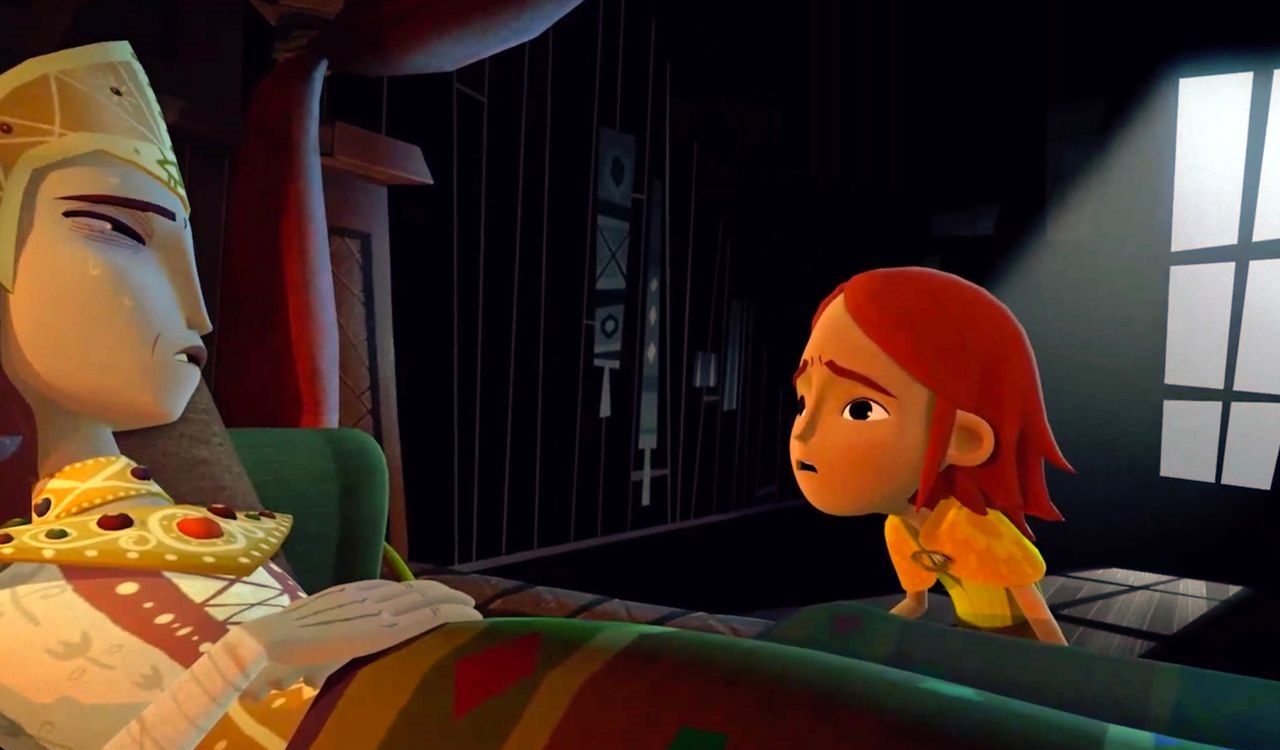
Catan VR
Probably the most cross-platform VR title we know of based on a popular board game. Catan VR is a resource collecting and trading game that has you building roads and cities between resource tiles and trading with others to gather what you need to fund your construction. Catan is a game where having full control or locking other players out of collecting their own resources and banding together to punish someone who is close to winning are common strategies. Catan VR portrays the highs and lows of the board game in great detail and even adds further immersion to the experience by placing you in a rustic tavern or a warm and comfortable study with mountains and hills visible from the windows in the distance, the field tiles on the board are beaming with life, sheep graze, birds fly, mountain dew sets and windmills spin.
The game supports 4-player online play with a multitude of mixed headsets, from the Samsung GearVR to the Valve Index, everyone can get involved. Players can pick from a handful of masks and personalities to represent their players but they do feel rather random and restricted, there’s no custom character or Oculus Avatar support, which is a shame, as we weren’t particularly fond of any of the options given. When it comes to gameplay though, once you get your head around the differences between the physical and virtual game, it suddenly clicks and friendly feuds and banter follows. Things like point counting and resource gathering are automated meaning you can concentrate on what’s important, having fun. We do wish there was a little more interactivity to keep you amused while you wait out a pre-trade argument between two players over who is ripping off whom.
We did experience some glitches and difficulties when starting the game, at first, the AI portraits covered the 'invite to game' menu and as you can’t invite people directly from your friends list we had to restart the app, then those players didn’t receive my second invites as they remained in the previous game and to top it off our third attempt resulted in a few of us not being able to hear one another, which was only fixed by yet another restart – our fourth attempt was luckily successful. We also think the host should have control of the room and paintings for everyone so they can keep things fresh for everyone during particularly long play sessions (Catan can take hours to end). Besides a few bugs and irritations, Catan VR is a brilliant adaption of the popular board game and is a great choice for family and friends who want the nostalgia of pre-2019 get-togethers.
8/10
Eleven Table Tennis
We reviewed a game called Racket Fury a little while back and most of what we had to say about that game can also be said about Eleven Table Tennis. Both are Table Tennis games that aim to replicate the real-world physics of the sport as accurately as possible. What this means is that if you aren’t a regular Table Tennis player the skill wall can be pretty steep, with enough practice you can slowly feel yourself starting to improve, but we wouldn’t play on a higher difficulty than easy or against other players online (of which there are a lot) until you’ve learned the basics of serving, returning the ball and scoring points, or you’ll quickly start feeling humiliated.
That doesn’t mean Eleven Table Tennis doesn’t have a lot to give, the graphics are great, probably the most real of any of the racket-based games on the Quest, with three cool and very different locations there should be one place that suits most players. You can choose different masks and headsets to place on your character’s avatar and can choose different pre-sets for the AI, or even play against your own Oculus avatar. The single and multiplayer is solid and there’s even a few basic mini-games that are aimed at helping you improve your skills, yes, even beer pong. Although we feel like more unique and fun mini-games might have been nice for more casual players.
The game isn’t without its issues though. During setup it asks who you’d like to receive in-game challenges from, we set this to friends only and were promptly spammed with random invites from strangers. This did stop after a restart but it actually resulted in the game crashing while we tried to work out why it was happening. The AI (regardless of difficulty) knows without fault if you’re about the miss the table and doesn’t even attempt to return the ball, even if it misses the table by millimetres - most amateur players in the real world wouldn’t have time to calculate the risk and would hit the ball anyway to be safe. We also wish there was a casual mode that didn’t penalise you for small errors like serving the ball past the table, we didn’t even know this was a rule before playing ETT. If you’re a Table Tennis nut you’ll probably love this game, if you’re casual and just want a jump-in fun experience there are more suitable games out there…
7/10
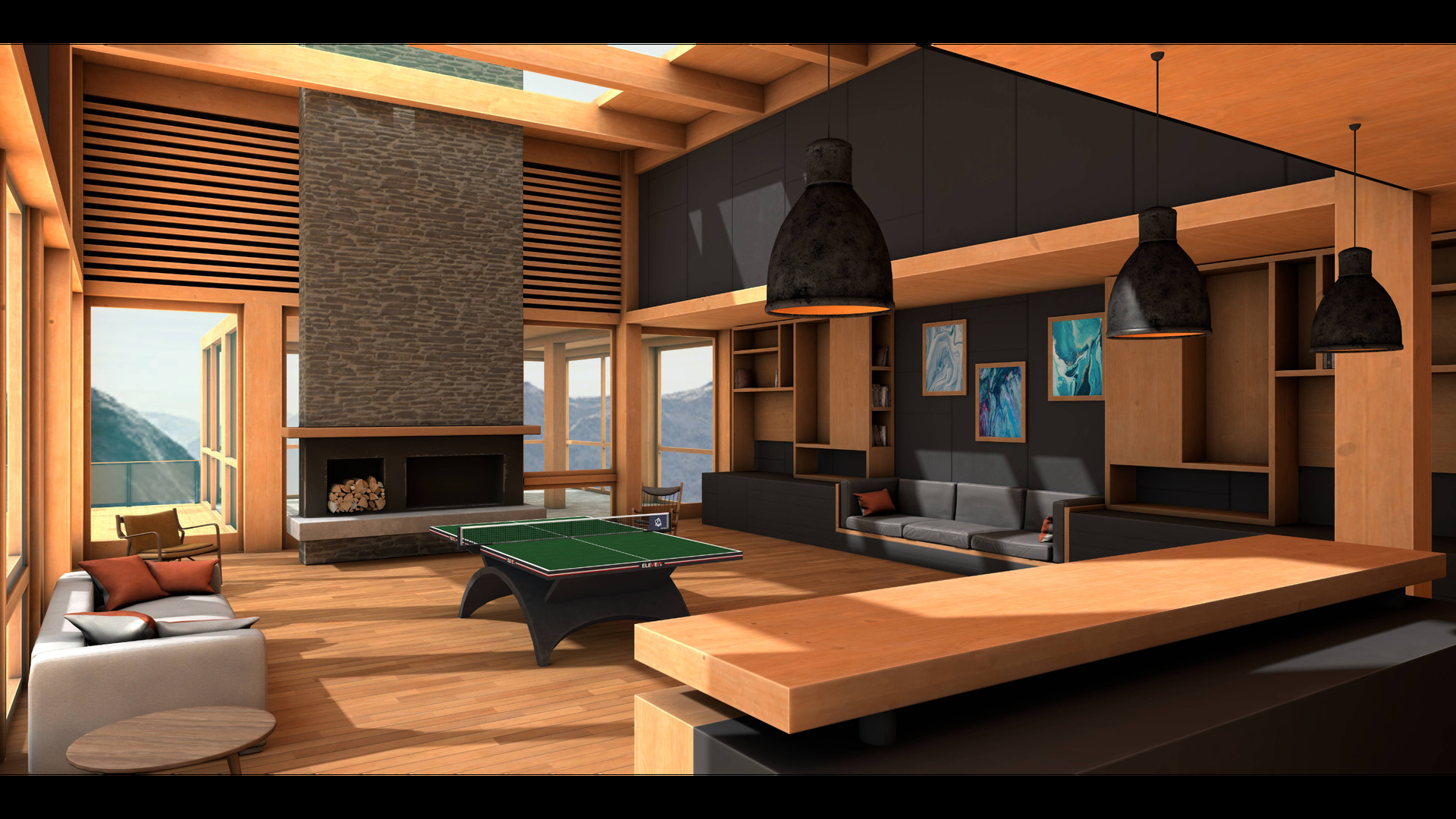
7/10
Fail Factory!
Another fairly run-of-the-mill mini-game title for the Quest that presents some of the same flaws as B-Team. The game has 40 different missions split among three stages, increasing in difficulty as you progress. The main game types are sorting coloured blocks into the corresponding chutes, lifting and dropping materials to recycle them and building or remote controlling a giant mech, there’s also a few bonus rounds that just let you throw things around and cause mayhem, using a gravity gun like that used in Half-Life 2. There’s no way to pick the categories of game types you enjoy the most and like B-Team, if you struggle to pass a level, there’s no way to skip or move past it - however, at least in Fail Factory you only need to get one of four stars to complete a level and move on. There’s no earnable currency, no upgrades, no multiplayer (not even local), just the base 40 levels.
Because of the game’s narration style, aesthetic and humour, its obvious Fail Factory is predominantly aimed at children, and there it succeeds pretty well, visually sitting between the likes of Despicable Me, Dexter’s Laboratory and Portal. The controls are simple to get a hang of and once you figure out how to build combos and shoot/drop objects in the perfect spots you can begin racking up the points relatively easy (we 4-starred all levels in the first stage without much trouble). One unfortunate detail is the lack of support for Quest-specific advantages, as Fail Factory started as an Oculus Go game, not much effort has been put in to make use of the second controller – we were half expecting to be catching and throwing cubes with both hands at once! However, while we don’t usually factor price into our reviews as we think all games should stand on their own merit, Fail Factory at its low price is pretty generous and will keep you busy long enough to justify the cost, and then some.
Between each level is a lengthy 20-30 seconds spent pointlessly travelling through tubes, which just slows the game down and with no visual variety, offers nothing in return to compensate your time. You can turn them off in the options which does seem to increase the loading times but it makes us wonder why they’re even included to begin with. There’s minimal level type variety and you can’t pick which variant you’d like to play. In certain levels, the game can stutter quite heavily, which would have been understandable on the Oculus Go, but we’re doing all our testing these days on Oculus Quest 2s, there’s no need for this game to be stuttering. Besides those negatives, Fail Factory is a cheerful and importantly cheap title that will keep children occupied and those with half an hour to kill on the couch or in bed a simple but charming distraction…
6/10
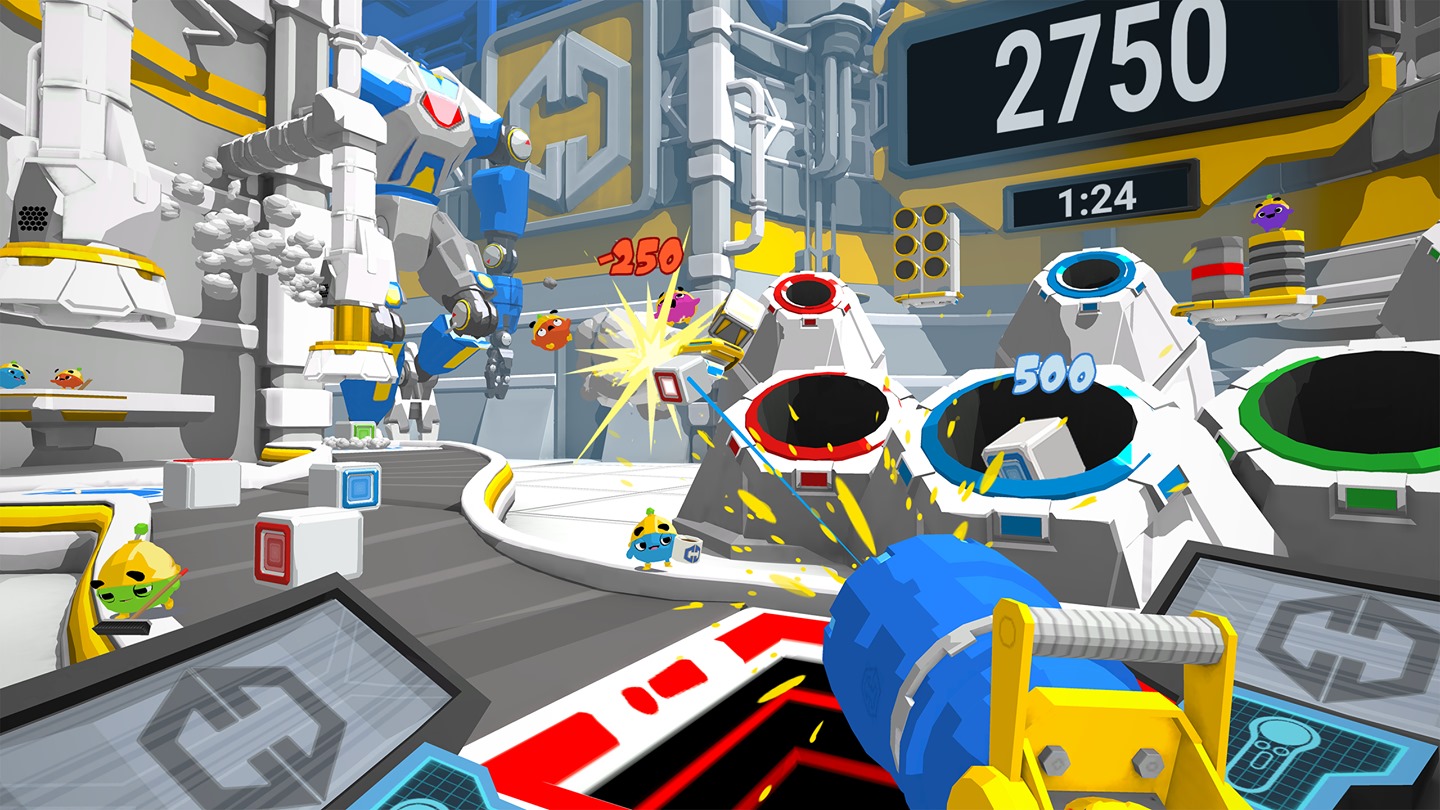
Ironlights
If you love swordplay in VR and games with highly competitive multiplayer then Ironlights should at the very least be in your wishlist. The game is a duel/gladiator type game that offers around eight or so weapons, each with their own speeds and unique special / ranged attacks. You’ll use energy to attack from range and can then pull yourself to your enemy to slash away at them, drawing your weapon over your shoulder to regain its energy after each swing, your opponent’s sole focus here will be to block your incoming attacks, recharging their weapons after each successful block in the same way. Each match is a back and forth of offensive and defensive engagements and the first player to reduce the enemy’s health to zero wins.
The game looks and plays great, sword swings and projectiles move in slow-mo but just quick enough to make the game feel fast-paced and fluid, we’re calling it slow-go. There are countless duels to fight through in the campaign, against various AI opponents and bosses with an assortment of weapons, some not even you have in your armoury. It would be nice if there were challenges that set your equipment for you to encourage you to learn new weapons. Each battle will earn you XP and gold you can spend on cosmetic upgrades to your armour and weapon. We love the way your weapon flies towards you before each duel and how enemies explode into thousands of particles as they die, affected by your weapon swinging through them, it just looks and feels super satisfying.
Besides the pretty uninspiring name, there are a few small irritations with Ironlights, the soundtrack for example is an odd choice and doesn’t seem to fit the game or its style in a way that adds to the gameplay - if the music changed depending on if you were attacking or defending, we didn’t notice. And then there’s multiplayer, which is great don’t get us wrong, but there were a few occasions when testing the welcomed seated-mode that players would move as far back in the play space as they could, meaning our swings would always miss then. You can counter this by moving forward but not everyone has wide-open play spaces and seated players are even more at a disadvantage. A possible solution could be that players stepped back should have their attacks come closer when being engaged. Besides that, Ironlights has some of the best swordplay in any VR game we’ve tried, period…
7/10
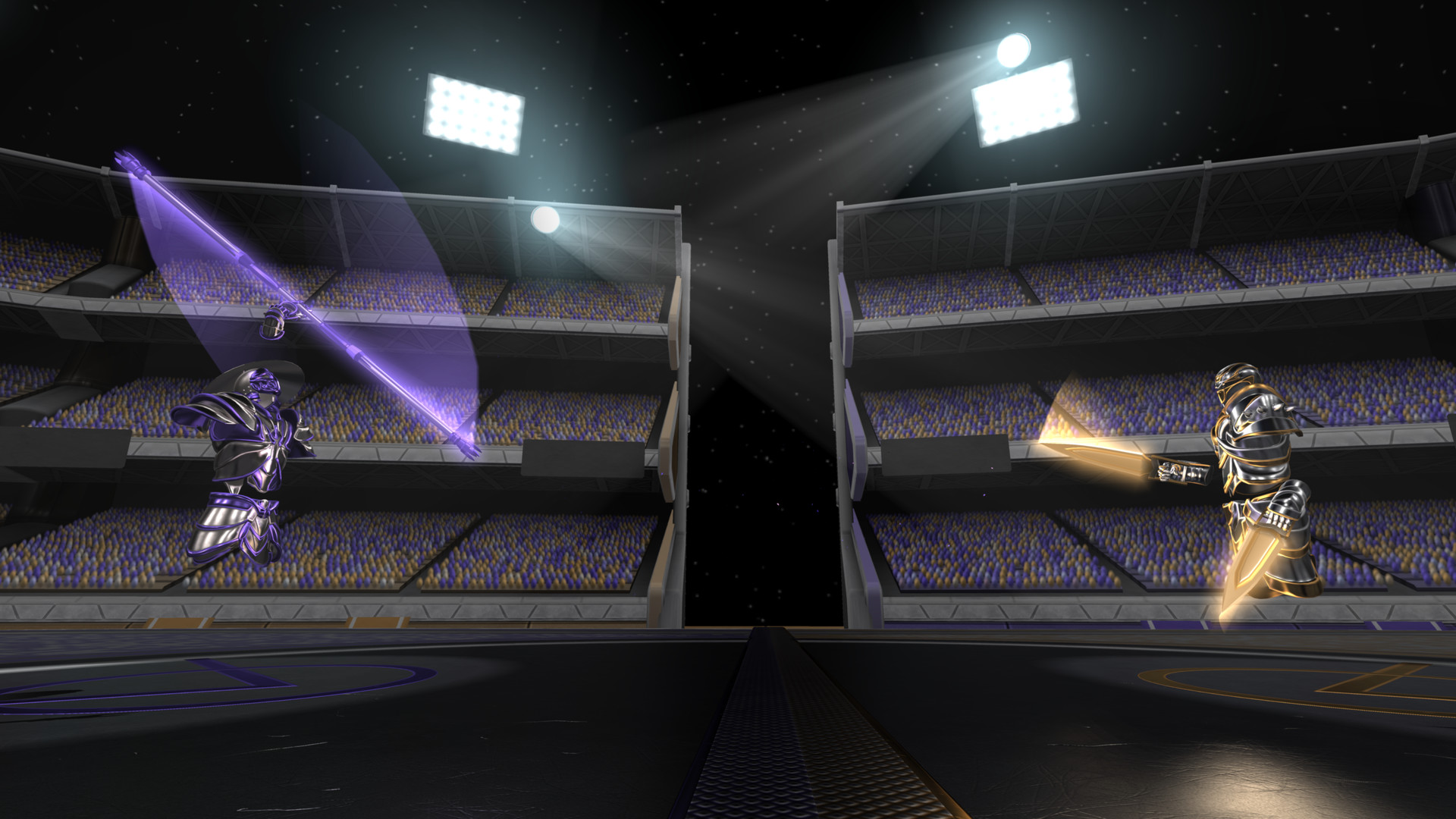
Little Witch Academia: VR Broom Racing
Based on a Japanese anime, Little Witch Academia is a Broom Racing game that feels like the mixture of Panzer Dragoon and Mario Kart in a Harry Potter Hogwarts Academy set in Japan. It has colourful and cartoon-like graphics that are generally pretty low-poly. As you play, you’ll meet and communicate with various other apprentices at the academy, who will explain aspects of the game and story before and after each race. The races are easy to get the hang of, steer the broom with your left controller and aim your wand to cast spells and the like with your right controller. Picking up boosts and power-ups as you go.
As you compete in races, you’ll earn points and tickets to spend in a store to upgrade and change the appearance of your broom. There’s a single-player campaign and a free-flying multiplayer mode too, although we flew around for over 10 minutes and no one else joined the game. The gameplay is generally pretty shallow and basic and would be the ideal game for young children, especially those that are into themes of witches, Harry Potter, anime or even the world of Little Witch Academia itself. For adults, unless you’re actually into this specific anime I’m not sure how long this would keep you entertained, but we must admit we’re 100% not the target audience for this game, so maybe we’re wrong there.
One thing they seem to have nailed here is keeping motion sickness to a minimum, despite how quickly you move in-game. For us, over the top, super animated voice acting just grates after a while and becomes irritating, it actually feels aimed at children. You can skip each sentence individually or even skip the whole scene to move on to the next race but it’s not made obvious how to do this. Even then once you’re racing the dialogue is screeched at you all the way through, repeating itself multiple times. If the game had a little more depth and player-attracting multiplayer modes this would have rated much higher for us…
5/10
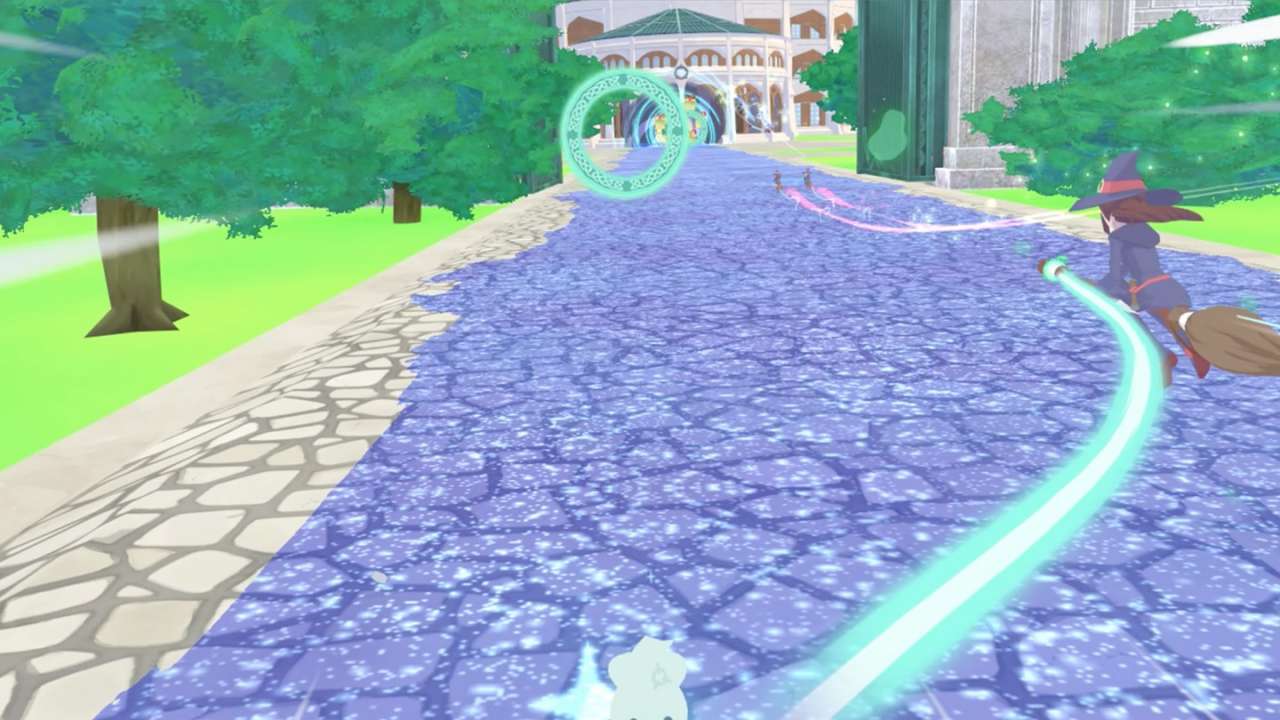
Mare
Now, this is the definition of a beautiful experience, a light puzzle-adventure game that has you controlling the flight and energy direction of a graceful mechanic bird, you’ll need to work together with a young and innocent girl (who unlike Baba Yaga, actually sounds and acts like a child) to progress and explore a beautifully dark and atmosphere drenched world, having her follow you and open up otherwise blocked off areas. While the puzzles aren’t too difficult or super rewarding to work out, the game is stunning in almost all other ways. The first (of eight) chapters is downright confusing but presented in such a way that you just sit and soak it all in.
You’ll quickly grow an attachment to your new friend and will find yourself jumping at opportunities to protect her from harm, her innate innocence and natural desire to explore and have fun are charming and making exploring the world with her all that much more enjoyable. We’re not usually fans of this type of art style, but Mare somehow even manages to draw us into marvel at its beauty, its dark, creepy, confusing and pretty all rolled into one. The moments where you encounter other living creatures or machines just feel so majestic and really pull you into the world, even the mechanic structures have a feeling of awe and mystery about them. The music is also a huge part of what makes everything feel the way it does, not often do puzzle games get that right.
Our negatives are significant but do not in any way take away from Mare’s beauty. At times when you’re stuck on a puzzle, the small girl can be a chore to wait to walk all the way to you which can bring the pacing to a snail pace at times. It’s also somewhat of a one-trick-pony, sticking mostly to similar puzzle types. It's also relatively short, clocking in at just a handful of hours to complete with not much reason to play through again unless you particularly enjoyed the experience and want it to jump back into the world once more. Mare proves an experience can be provocative, interactive and longer than a single hour all at the same times…
7.5/10
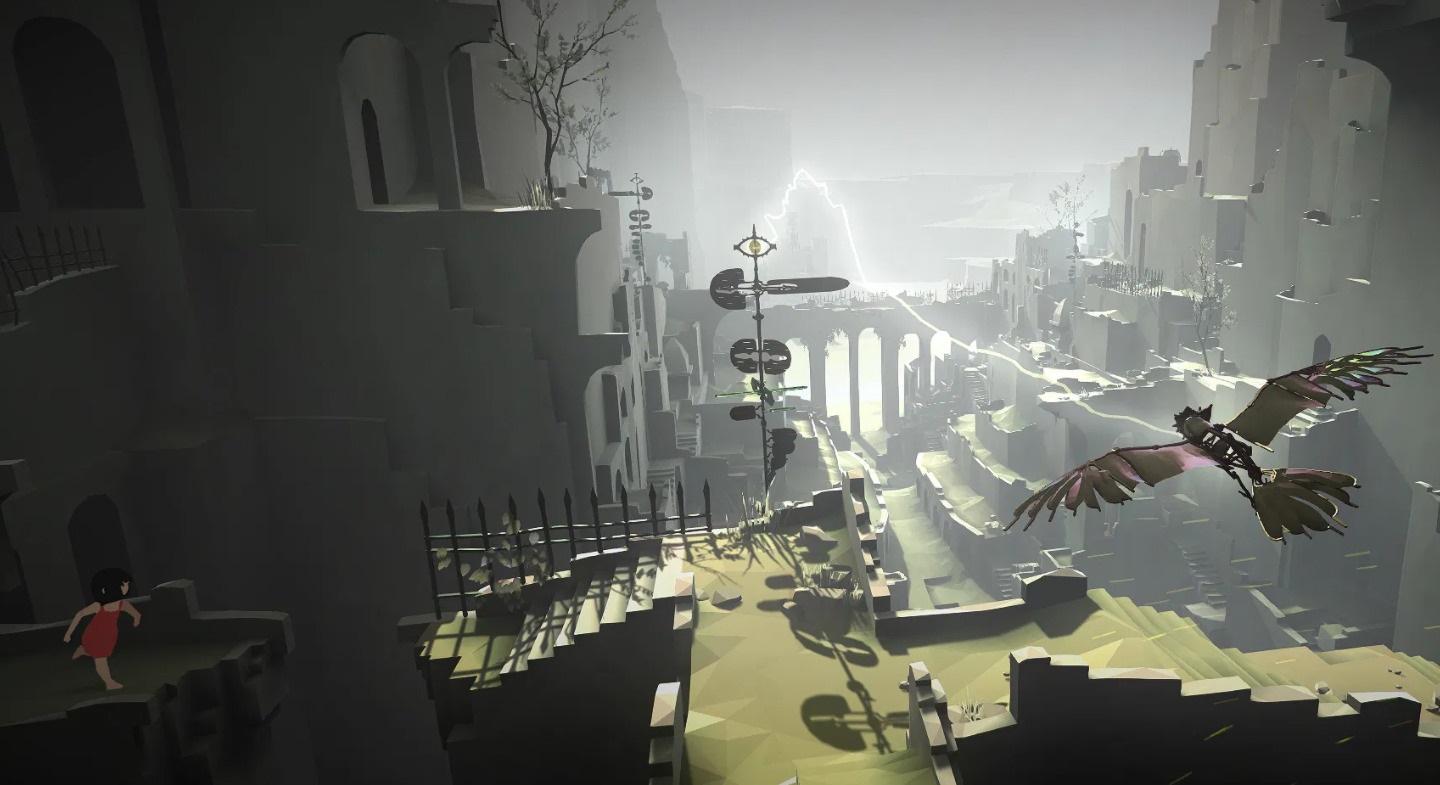
National Geographic Explore
Virtual Reality is the perfect medium for those wanting to explore natural wonders around the world and National Geographic have attempted to do just that with their Explore VR app for the Oculus Quest. You’ll visit two locations in Peru and Antarctica, experiencing landmarks and wildlife in both while narration and voice acted characters in the game talk you through the history and facts about each location. You’ll have tasks to take photos in-game of particular scenes, objects or animals that will unlock more information about that specific area. The graphics aren’t anything to get excited by but they serve the purpose and look good enough to closely resemble their real-world counterparts.
Each area will likely take the average person around an hour to complete in full, but there is enough content to keep each hour engaging and interesting, for example, the Antarctica area has proper kayaking and mountain climbing sections, the latter of which was genuinely immersive and fun. The camera element seems a little gimmicky but you can place photos in frames in your in-game home and can even share them on Facebook so they have at least fleshed those features out somewhat. You can take each experience at your own pace and can choose between teleporting and locomotion controls which is a nice addition, although sadly no properly implemented seated mode, which seems unfortunate for a game that could specifically help disabled people explore the world.
There are sadly a few big things we don’t enjoy about NGE, firstly it just doesn’t seem to have much polish; getting too close to walls just turns the whole screen black, one photo asked that you place a hat on a rock but the hat just kept spawning and immediately falling through the floor and during the climbing section the ice picks would regularly clip through the mountain or get stuck entirely. There’s also no way to go back over the content you've already experienced without listening to all the instructions and dialogue again, while probably engrossing for kids, the narration comes across as patronising and over-enthusiastic, it's just not as arty and awe-inspiring as it could have been. It certainly has great moments but is sadly let down by lack of polish and borderline cringe handholding and congratulating…
6.5/10
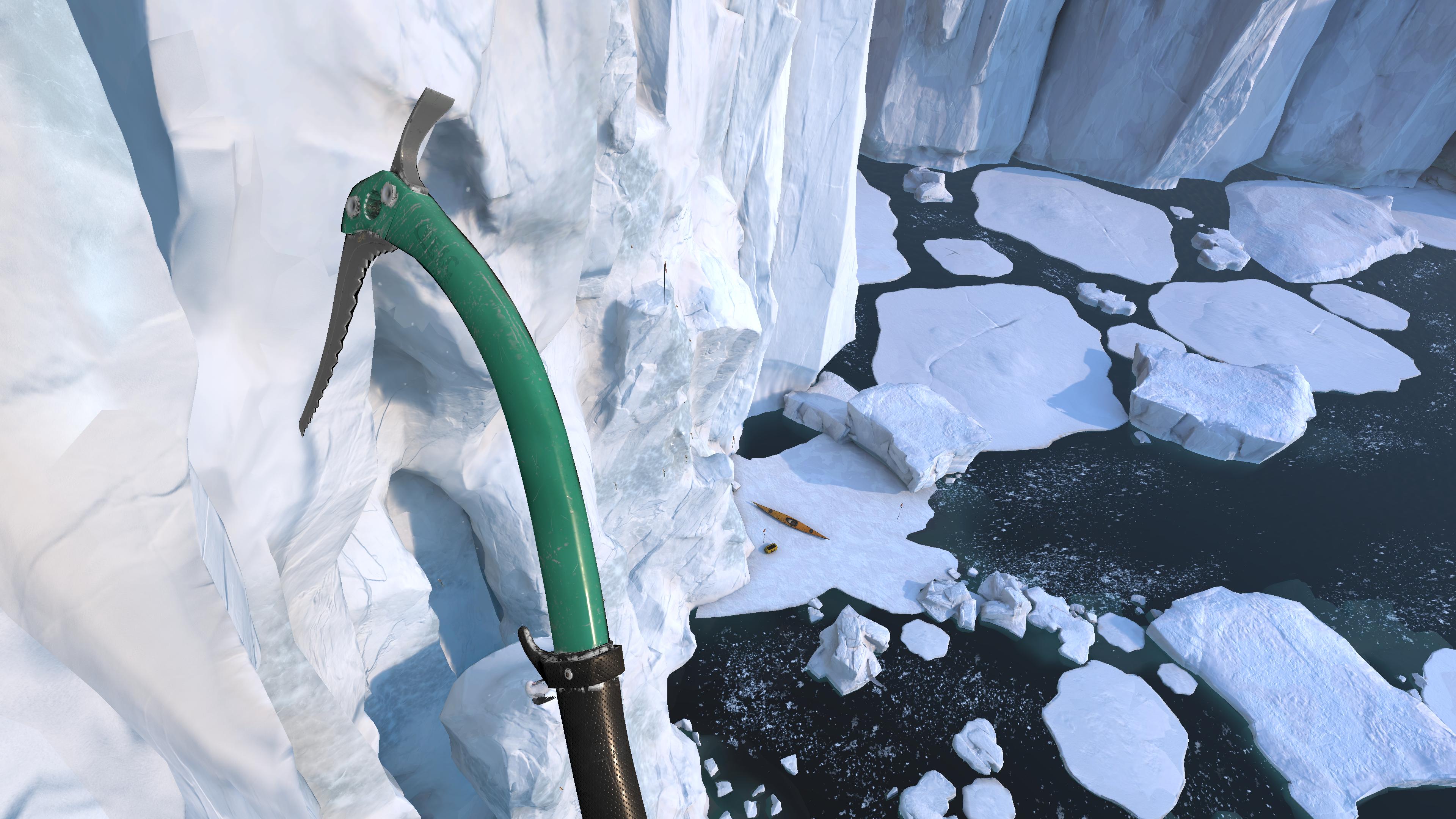
REAKT Performance Trainer
Full disclosure on this one, none of us at OP are athletes or physical sports players of any kind, which is the group of individuals that REAKT aims to attract – the developers when speaking with us even made it very clear that their app is a performance trainer, not a game. With this in mind, we fully expected this to be very technical and not all that enjoyable to your average gamer – however, we were pleasantly surprised to find the core mechanics both fun and rewarding to play. The main game modes are designed to improve your reaction time and hand-eye coordination and we can totally see this being a reality if you stuck at it. Even in the few hours we put into the game we could already see ourselves improving in between rests. After each session, you are presented with visual stats and feedback to reflect your performance and where you might need to improve.
The physical mode has you blocking yellow orbs, with more points for more accurately blocking them, while dodging fast-moving red orbs, which if you notice quickly enough you can slow down by pulling the trigger. The mind-training mode has you tracking orange objects that lose their colour and pulling the trigger the moment you notice them pulsing, you’ll increasingly be tasked with tracking more objects at once which float around the screen at increasing speeds, attempting to switch your tracking to the wrong objects. Both of these modes are fun and have genuine potential to help you develop both your reaction times and coordination. The soundtrack features chilled beats that support your concentration and adds another layer of enjoyment to the experience, although music can be turned off in the options for those who concentrate better without it.
Our main downside would be the lack of variety in modes, while we know these are highly-targeted at increasing your performance, we think even extremely self-motivated people would benefit from some variety to help them push onwards. One of the data points REAKT collects is the type of sports you play, as gamers, we solely picked eSports to see how the game would react to this, however, it seems to give a general mixture of training suggestions with no explanation as to how the suggested training would benefit my particular eSports discipline over say Rugby – some clarification on how REAKT is customising your experience to match your most played sports would be a very welcome inclusion. We’re also disappointed to see no YUR support. REAKT Performance Trainer was a welcome surprise and with a few more featured modes and clarification to its supposedly tailored training would have steered it towards a perfect score…
7.5/10
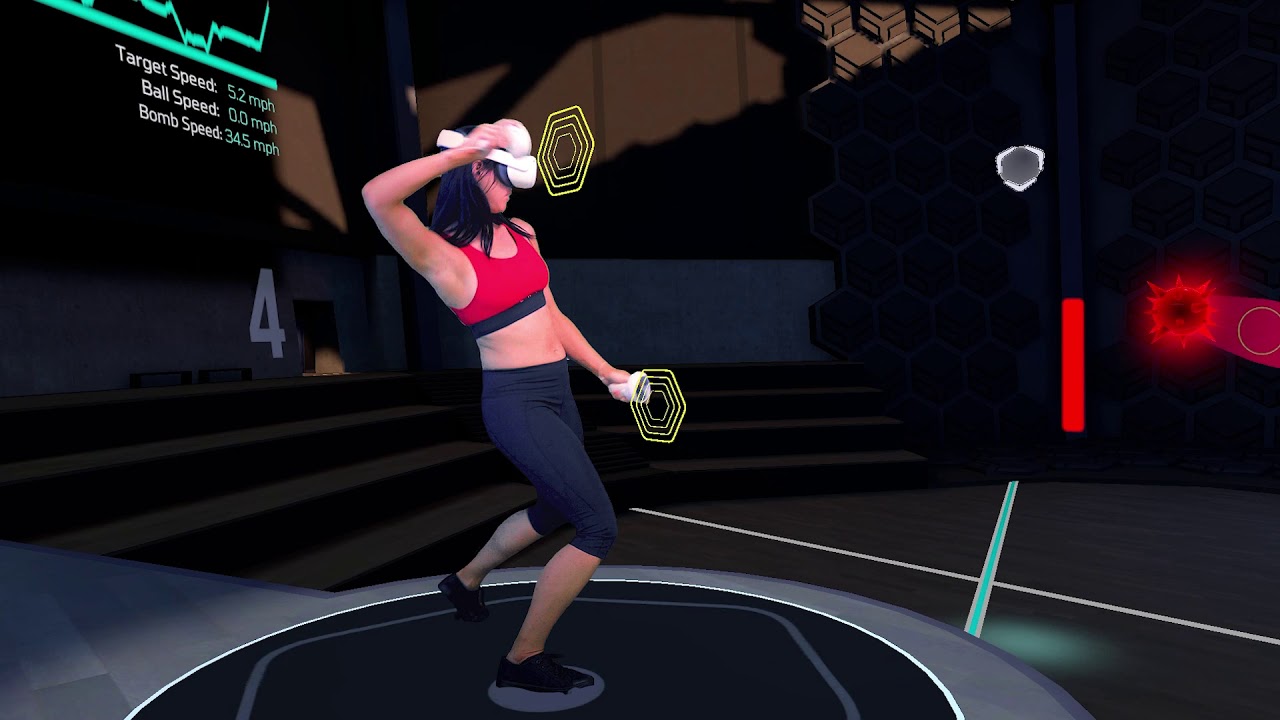
Our next article will feature our ONE-HUNDREDTH Oculus Quest game review, so we're planning some special titles for that article. For now, we'd like to hear peoples' thoughts on the new Oculus Quest 2 and what steps it takes both forwards and backwards for the world of virtual reality as a whole.
What is impressive for you about the headset and what turns you off it generally? Share your thought-spaghetti below!


